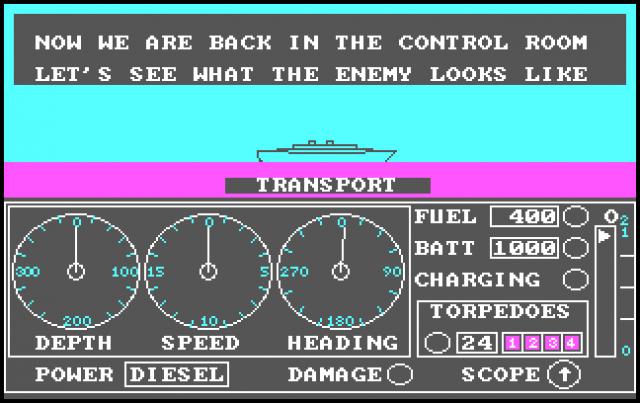Gato (1984) Mac OS
Gato (1984) Mac OS

- Autoduel is a 1985 computer role-playing game (CRPG) published by Origin Systems for the Atari 400 and Atari 800 (and other Atari 8-bits with OS 'Transformer'), Commodore 64, Apple II, Apple Macintosh, and MS-DOS. It was released in 1987 for the Atari ST and in 1988 for the Amiga.
- On Mac OS X QuickSync can be used as well, but only with certain parameters, and we have very little control over what it does or even when it activates as this is controlled by Mac OS X. We have been and continue to work hard on optimization, and our developers are speaking directly to Apple engineers to understand what more can be done.
- Apple MAC OS X El Capitan HD Wallpapers. Download Apple MAC OS X El Capitan desktop & mobile backgrounds, photos in HD, 4K high quality resolutions from category Nature & Landscape with ID #14822.
Here are the two website links that are in the video:Speedtest: speedtest.netSoundflower: to.
| GATO | |
|---|---|
| Developer(s) | Spectrum Holobyte Xanth F/X (Atari 8-bit)[1] |
| Publisher(s) | Spectrum Holobyte Atari Corporation |
| Designer(s) | Paul Arlton Ed Dawson |
| Platform(s) | MS-DOS, Apple II, Atari 8-bit, Atari ST, Macintosh, Commodore 64 |
| Release | 1984: MS-DOS, Mac 1985: Apple II 1986: Atari ST 1987: Atari 8-bit |
| Genre(s) | Submarine simulator |
| Mode(s) | Single-player |
GATO is a real-time submarine simulator first published in 1984 by Spectrum HoloByte for MS-DOS. It simulates combat operations aboard the Gato-class submarine USS Growler(SS-215) in the Pacific Theater of World War II. GATO was later ported to the Apple IIe, Atari ST, and Macintosh. In 1987 Atari Corporation published a version on cartridge for the Atari 8-bit family, to coincide with the launch of the Atari XEGS.[2]
Gameplay[edit]
The player is tasked with chasing Japanese shipping across a 20-sector map while returning for resupply as necessary from a submarine tender. The islands on the map are randomly generated and not based on real-world geography. Combat is conducted using a screen with a view through the periscope and at various gauges and indicators. The game has multiple difficulty levels, the highest of which requires the player to translate mission briefings which are transmitted only as audible Morse Code.
The MS-DOS and Apple IIe versions contain a boss key which replaces the game screen by a spreadsheet.
The timing of the game relied on the computer's CPU clock-speed, rather than the time-and-date clock, making it unplayable as 80286 CPU-based computers came onto the market.
Key assignment[edit]
if playing in DOSBOX 'strg + F11' slow down CPU speed, 'strg + F12' speeds up CPU (press repeatedly)
F1 : Full speed
F5 : Moderate speed
F9 : Stop
F10 : Reverse
F2 : Periscope up
F4 : Periscope down
F6 : Radar
F8 : FIRE
Other commands :
F : Forward view
P : Left view
A : Rear view
S : Right view
L : (Log) list of sunken ships
M : (Mission) Start a new mission
R : (Report) Damage report
C : General map
Q : Map of the current quadrant
T : (Torpedoes) Open & Close torpedo doors
Engine
D : (Diesel) Only if Depth
E : (Electric)
Keypad up : dive up
Keypad down : dive down
Keypad left : rudder left
Keypad right : rudder right
Keypad 5 : Center rudder and dive
Development[edit]
Marketed by Spectrum HoloByte, Gato had originally been developed by student programmers in Boulder, Colorado.[3]
Reception[edit]
Billboard magazine reported in June 1985 Gato coming in at number 6 of a national sample of retail sales and rack sales reports.[4]
In 1985, Computer Gaming World praised the game for being simultaneously easy to play and having deep, detailed strategy.[5] 1991 and 1993 surveys in the magazine of strategy and war games, however, gave it one and a half stars out of five, stating that 'it was adequate in its time, but not exemplary in any regard'.[6][7]Compute! stated that 'Gato promises realism, and it delivers ... [it] lives up to its claims'.[8]Jerry Pournelle wrote favorably of the game in BYTE, stating that he wished he could slow the game down but 'I've certainly wasted enough time with it ... Recommended', and that he preferred the black-and-white Macintosh version to the color IBM PC version.[9]
Reviews[edit]
- The V.I.P. of Gaming Magazine #2 (Feb./March, 1986)
References[edit]
- ^Wen, Howard H. (January 1989). 'Gato Review'. Video Games & Computer Entertainment.
- ^'GATO XE Label'. Atari Age.
- ^'Flight-simulation game is so real that even A.F. wants a piece of action'. The Deseret News. 24 January 1988.
- ^'3D Living Today - The Top 10'. Miami Herald. 29 June 1985.
- ^Sipe, Russell (Apr–May 1985), 'IBM Goes to War', Computer Gaming World, pp. 24–25
- ^Brooks, M. Evan (November 1991). 'Computer Strategy and Wargames: The 1900-1950 Epoch / Part I (A-L) of an Annotated Paiktography'. Computer Gaming World. p. 138. Retrieved 18 November 2013.CS1 maint: discouraged parameter (link)
- ^Brooks, M. Evan (September 1993). 'Brooks' Book of Wargames: 1900-1950, A-P'. Computer Gaming World. p. 118. Retrieved 30 July 2014.CS1 maint: discouraged parameter (link)
- ^Williams, Michael B. (November 1985). 'Gato For Apple And IBM'. Compute! (review). p. 90. Retrieved 30 October 2013.CS1 maint: discouraged parameter (link)
- ^Pournelle, Jerry (September 1985). 'PC, Peripherals, Programs, and People'. BYTE. p. 347. Retrieved 27 October 2013.CS1 maint: discouraged parameter (link)
External links[edit]
Mac Os Catalina
- GATO at MobyGames
- The MS-DOS version ofGato can be played for free in the browser at the Internet Archive
Gato (1984) Mac Os Update
Gato (1984) Mac OS
